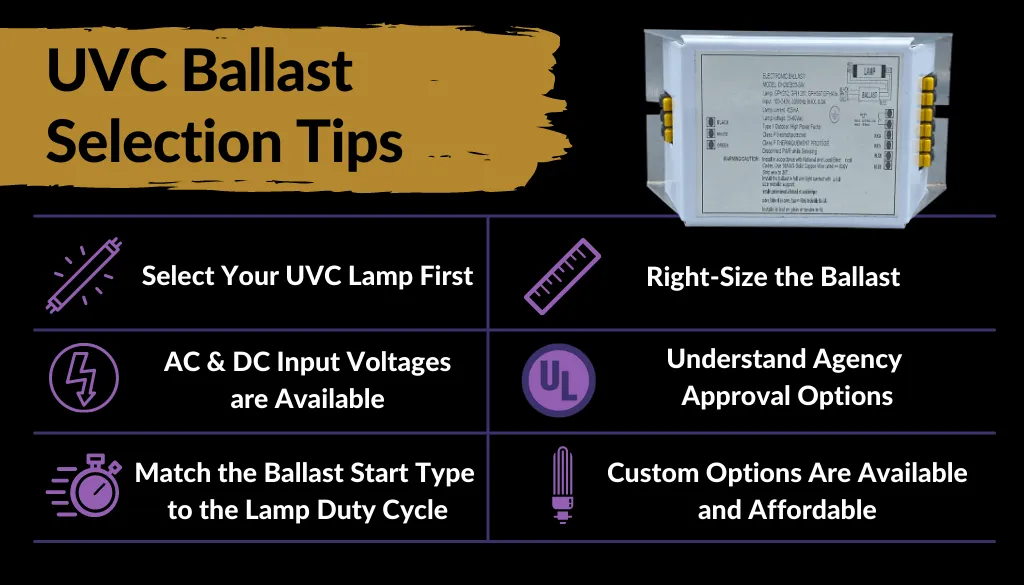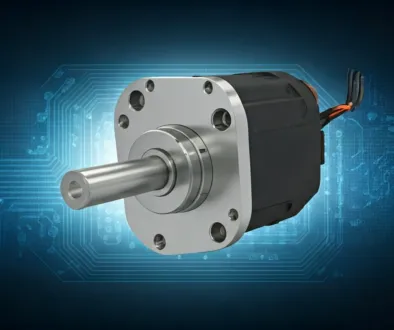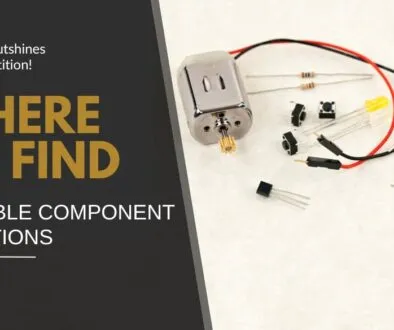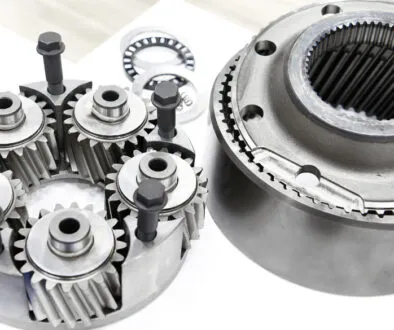UVC Ballast Selection Tips
6 Tips For Selecting the Optimal UVC Ballast
How do I choose the right ballast?
Selecting or designing the proper UVC electronic ballast can be a difficult exercise, but ISL Products is here to help! There are many details to carefully consider when you are selecting a UVC ballast for your application or device. Below are six tips that will help you select the best ballast option for your next project.
The last year many agencies like the department of environmental technologies have proved the usefulness of UV-C light and UV-C technology for disinfection. It has also increased the demand for UV ballasts. Whether it is for surface disinfection, water purification, or residential HVAC air purification – Ultraviolet light has become a more important part of our daily life.
As a world-leading UVC ballast designer and manufacturer, we are here to get you headed in the right direction. We hope that this will help get your project illuminated! Our dedicated application engineers are here to assist, if you have any questions during the design or selection process just let us know. Our website LiveChat is an easy and effective way to get questions answered quickly.
Tip # 1: Select Your UVC Lamp First
Do UVC bulbs needs a ballast?
In order to properly select a UVC lamp ballast, you first need to figure out what UVC lamp(s) you will be using. This isn’t as simple as pairing a fluorescent lamp with a fluorescent ballast. Both Mercury and Amalgam based UVC lamps require a much more specialized ballast. A UV-C germicidal bulb designed for disinfection requires a lot more power than low-pressure UV bulb designed for curing resin.
Ultraviolet germicidal lamps come in different lengths, uvc outputs, shapes and pin arrangements. The most important lamp specs you need to know are the lamp voltage, current and power.
- Standard UV output lamps typically operate at <425mA.
- High Output (HO) uv lamps operate at >800mA.
The UVC ballast’s electrical output is designed to meet the ultraviolet lamp’s requirements. This pairing ensures proper illumination from the initial strike voltage to continuous operation.
Utilizing one UVC ballast to operate multiple germicidal bulbs is not as straightforward as you would expect, but can be done efficiently with the proper ballast. You will need to factor the additional lamps into your electrical calculations so the ballast can be designed accordingly.
All UVC lamp specs should provide the voltage, power, wattage, and current requirements. Some of the more common uv-c bulbs are manufactured by companies like Light Sources, Philips and Ushio.
Tip # 2: AC & DC Input Voltages Are Available
Decide if you will be operating your UVC germicidal ballast with either AC or DC power. Ballasts come in a variety of input voltages so finding a solution to suit your needs should not be too difficult. Some popular voltages are:
- 120VAC / 240VAC – this can be either a single AC input, manual switching or automatic switching input. The switching input options are great for devices that are used globally.
- DC Input – if your device is battery operated or simply running on DC power, the most popular options are either 12VDC or 24VDC. DC input is a less common option but ISL Products has been offering these for many years for a variety of applications.
- 24VAC – this is seen more commonly in the HVAC industry. Most HVAC systems use a 24VAC transformer. A 24VAC ballast can be wired directly into the preexisting HVAC electrical system, simplifying installation.
Tip # 3: Match the Start Type to the Lamps’ Duty Cycle
Ballasts are designed with one of three different start types or starting mechanisms: Instant Start, Rapid Start and Programmed Start. The ballast starting mechanism determines how the ballast illuminates the UV germicidal lamps.
Which ballast is more efficient?
In order to properly select the most appropriate start type for your application, you first need to define the on/off duty cycle of the lamp you will be using. The starting mechanism within the ballast controls the voltage, current and power that is supplied to the lamp. The more frequent the illumination duty cycle, the shorter the lamp life will be. Without the proper ballast start type the UVC lamp could fail much sooner than expected.
- If your UVC lamp is cycled on/off < 3 times per day, an Instant Start ballast would be sufficient.
- If your UVC lamp is cycled on/off 3 ~ 5 times per day, we would suggest using a Rapid Start ballast.
- If your UVC lamp is cycled on/off more than 5 times a day, a Programmed Start ballast will be the best option.
Learn about Ballast Start Types
Tip # 4: Right-Size The Ballast To Your Application
While each manufacturer has their own standardized case sizes and configurations, there is no industry standard when it comes to UVC ballasts. This means that similarly functioning ballasts from two different manufacturers may come in two completely different form factors. Choose the option that fits your project the best, or ask if alterations can be made to accommodate your request. Consider the following:
- Overall size constraints: Length x Width x Height
- Mounting Orientation / Style
UVC Ballasts also come with different input and output termination styles. While most ballasts will have standard lead wires or terminals, value added options are worth inquiring about to make the ballast even more assembly-ready.
- Push or Screw Terminals – the most common type of ballast connector. These allow you to connect your own lead wires and are a good option if your wire length is not standardized.
- Flying Leads – stripped and tinned, ready for connector assembly. This is a good option if your wire length is consistent amongst all applications and eliminates the hassle of wire prep.
- Preinstalled Connectors – this is a value-added feature that not all manufacturers are willing to do. ISL Products is capable of installing a customers’ approved connector at the factory and shipping plug-and-play ballasts.
Tip # 5: Understand Agency Approval Options
Not all UVC lamp ballasts require agency approvals. The types of approvals that you need will depend on a variety of things; the input voltage of the ballast, the industry and or setting where the device is used, even the regulations in the country where the product will be sold. If a general approval is needed, a ballast will typically be rated and approved to UL935 standards.
- ETL / UL / TUV – are some of the more common approval agencies. ISL Products uses ETL for most of their ballast approvals.
While most ballast manufacturers offer agency approved ballasts, it’s always good to check the ballast label for the ETL , UL or TUV file number. ISL Products holds an ETL file with various ballasts listed.
Tip # 6: Customized Ballast Options Are Available & Affordable
If you can’t find an electronic ballast that meets all of your requirements, give us a call. We offer our customers the ability to customize any UVC ballast that will be suited to meet their exact application requirements. This does not mean it’s going to be expensive. All of our ballasts, standard or customized, are an excellent, cost-effective option. We have the ability to offer a variety of different features and physical customization.
ISL has been designing and manufacturing ballasts for UV-C germicidal lamps for over 15 years and we’ve seen it all. We have made ballasts for everything from stand-alone residential UVC units to water purification devices that help provide clean water to developing nations. We are proud to be a part of each project and look forward to working with you!





